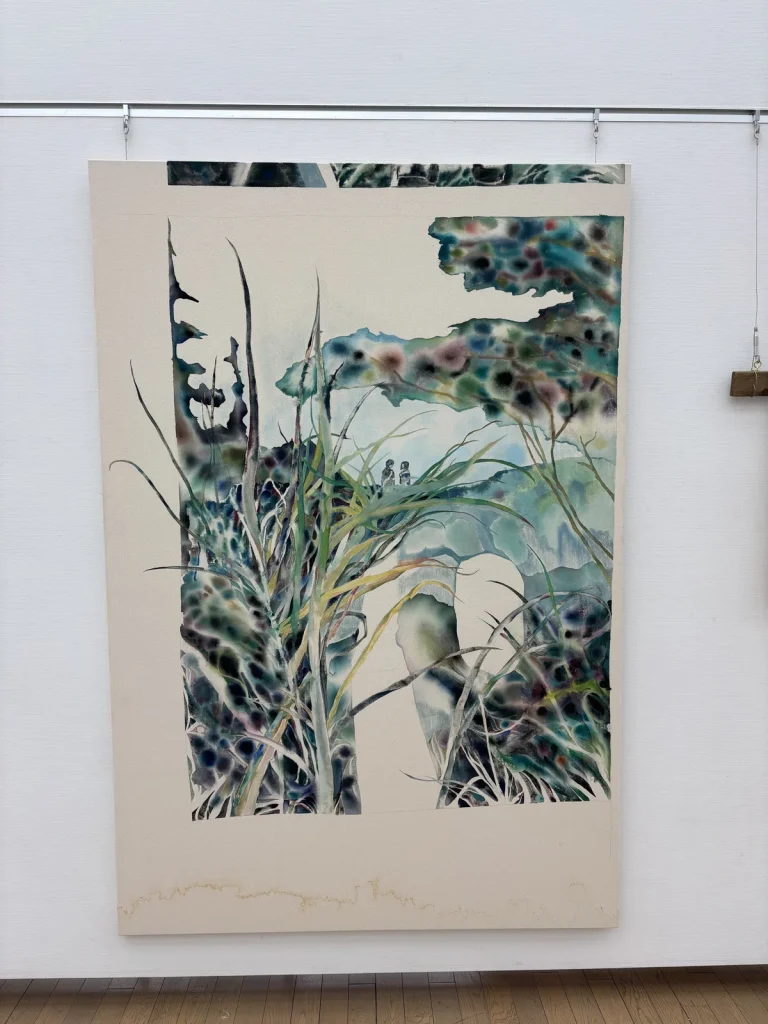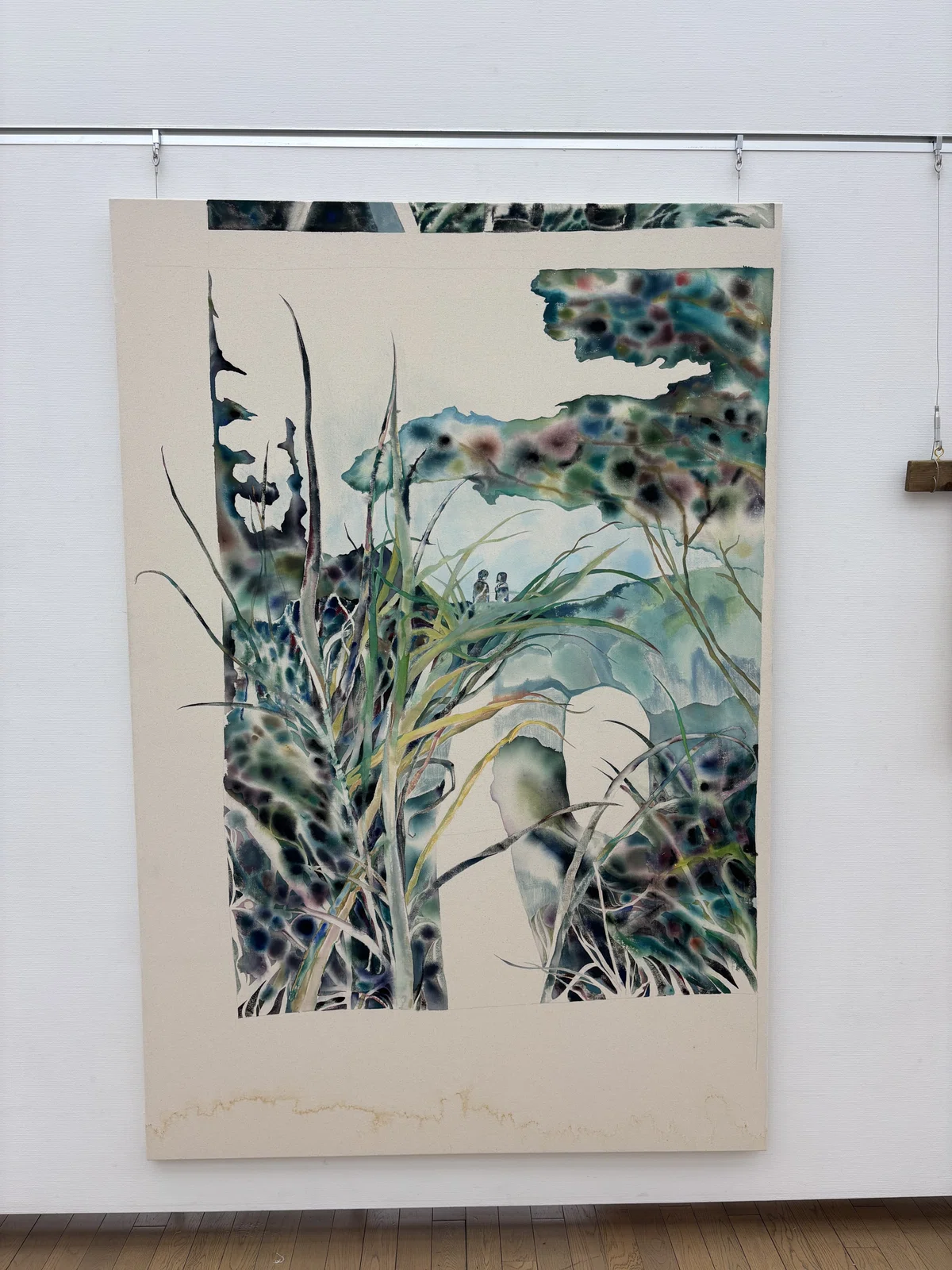A Review by Saito Tsutomu Originally published in Japanese on note.com
Exhibition: Five Art Universities Exhibition / Musashino Art University
Year: 2025
Medium: Acrylic, watercolor, and mineral pigments on canvas
Institution: Musashino Art University
Opening Context
My 2025 graduation exhibition tour concluded with the Five Art Universities Exhibition. This year’s journey stretched from Yamagata to Saga, covering unprecedented distances. Each year, encountering new works proves stimulating in countless ways.
The Work
I had previously seen Matsuda Nayuko’s “Yuri-shiro-iro no” at Musashino Art University’s Takanodai campus, but at the Five Art Universities Exhibition, I was able to engage with the work anew. Painted on a large canvas, this piece possesses a natural magnetism that draws the viewer’s gaze. It is characterized by colors that are simultaneously vivid and pale, with bleeding effects created through a combination of acrylic, watercolor, and mineral pigments spreading across the entire surface.

Compositional Analysis
The colors enveloping the work consist of delicate blues and greens, with hints of pink and purple appearing intermittently. This bleeding brushwork seems to intentionally blur the boundaries between elements of the natural world. When confronting this work, one’s gaze is first drawn to the susuki-like plants in the foreground, then naturally guided toward two small human silhouettes facing each other in the center of the composition, and finally continues toward the forest beyond. They stand within the vast natural landscape, simultaneously integrating with the surrounding vegetation and scenery while being depicted as subtly distinct presences.
Multiple “gaps” exist within the work. The blank space in front of the figures can be interpreted as a path, but the gap in the lower-center right area has a meaning and function that is not immediately apparent. This very uncertainty stimulates the viewer’s contemplation and deepens immersion into the work’s world. These voids function not merely as empty spaces but as crucial compositional elements, offering viewers room for imagination and encouraging them to fill in their own interpretations—like open-ended questions.
The composition features bold empty spaces that frame the central motifs. The imagery in the upper portion gives the impression of film flowing past. This sensation of time flowing through the tranquil composition creates an exquisite coexistence of stillness and movement. The spreading water stains in the lower portion harmonize with the artist’s intentional control, evoking the organic growth and transformation of the natural world.
Semantic Interpretation
The title “Yuri-shiro-iro no” evokes associations with “lily” (yuri) and “white” (shiro), yet “yuri” also seems to contain meanings of “swaying” or “fluctuation.” This semantic multiplicity resonates with the ambiguous boundaries expressed in the composition and the coexistence of fixed forms with fluid spaces.
Artistic Achievement
Matsuda’s work transcends mere landscape painting—it is one in which narratives unfold within the viewer, presenting a world that surpasses mere impression.
Exhibition: Five Art Universities Exhibition, Musashino Art University
Medium: Acrylic, watercolor, and mineral pigments on canvas
Year: 2025
